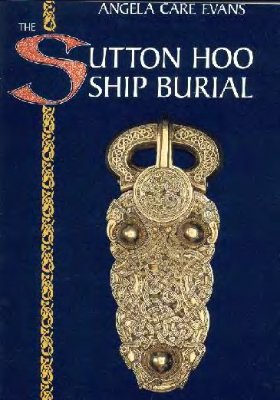Издательство Британского музея, 1986 г. - 128 с. ISBN:
9780714105758
Книга рассказывает об истории раскопок захоронений в Саттон Ху и
реставрационных работах. Представлены в фотографиях, рисунках и
подробных описаниях наиболее значимые находки - комплекс
вооружения, ювелирные украшения, бытовые предметы.
The Sutton Hoo site is one of the most important archaeological
discoveries ever made in Britain, and arguably the world. The
summer of 1939 saw one of the most exciting archaeological finds
ever dug from British soil, an undisturbed Anglo-Saxon ship burial
at Sutton Hoo, near Woodbridge in Suffolk. The ship, nearly 30m
long, had been dragged uphill from the estuary of the River Deben
to a royal gravefield and buried beneath a large circular mound.
Amidships, in a textile-hung chamber, a sumptous burial was laid
out unique in its glittering wealth of jewellery and unrivalled in
the variety of objects that had been selected to represent every
facet of the dead man's life. Gold and gaet jewellery, silver
from the easte Mediterranean, drinking vessels with silver gilt
fittings, a magnificent helmet and parade shield, a lyre and
sceptre were amongst the spectacular finds excavated in two hectic
weeks just before the outbreak of World War II.
Although no remains of a body survived and no personal possessions
were found, the gold and gaet regalia alone implied that the
burial was that of a king. His identity remained elusive until
research resulted in a date of 625/30 for the latest of a
collection of small gold coins found in the ship, suggest that it
may have been the grave of Raedwald, king of East Anglia, who died
in 624/
5. In this new edition of the survey first published in 1986, the excavation of the ship and its contents are described and illustrated and the results of many years' research at the British Museum are summarised. The book also brings the story right up-to- date and includes illustrations of the most recent excavations.
5. In this new edition of the survey first published in 1986, the excavation of the ship and its contents are described and illustrated and the results of many years' research at the British Museum are summarised. The book also brings the story right up-to- date and includes illustrations of the most recent excavations.

